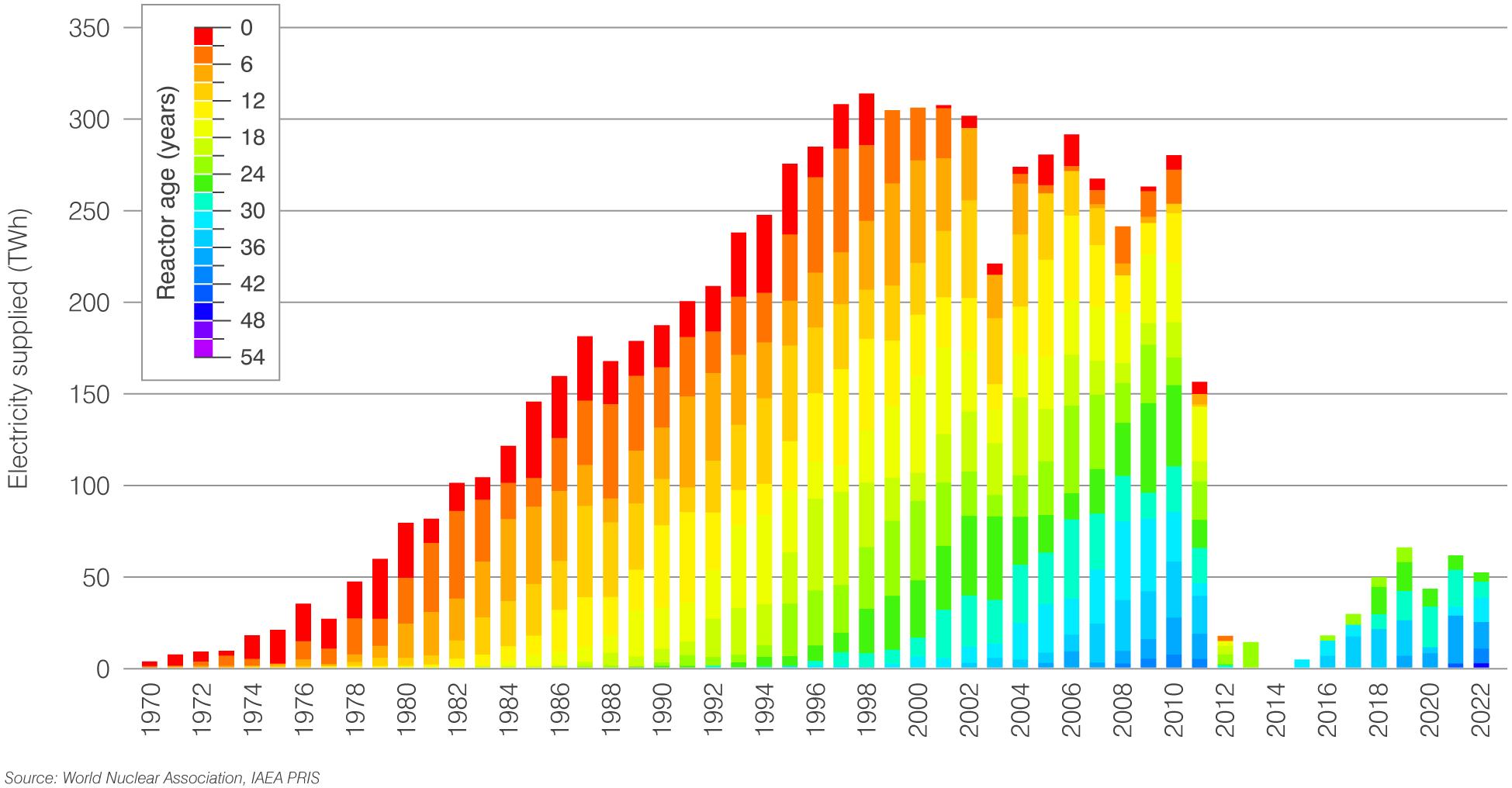Japan
 As of 31 December 2022
As of 31 December 2022
Following the March 2011 tsunami and subsequent accident at the Fukushima Daiichi plant, all reactors in Japan have had to get regulatory approval to restart. Only ten (9500 MWe) of the country’s 33 operable reactors have since restarted as of June 2023.
In September 2022, the Ministry of Economy, Trade & Industry (METI) outlined plans to maintain the 60-year cap on reactor operating lifetimes. However, the years when reactors remained idled – in the wake of the 2011 Fukushima accident – would not be included in the calculation. In February 2023 the cabinet approved a new policy enabling nuclear reactors to operate beyond the 60-year limit, with lifetime extensions approved once every ten years after a reactor has attained 30 years of operation.
In December 2022 the government adopted a policy maximizing the use of existing reactors by restarting as many of them as possible, whilst also developing advanced reactors to replace those that are shut down.
Figure Ja1. Annual electricity output (TWh) and age of reactors (years) at time of generation

Figure Ja2. Average capacity factor of reactors in Japan

Figure Ja3. Emissions avoidance through use of nuclear generation in Japan

Kansai seeks to extend lifetime for Takahama units : World Nuclear News - 26 April 2023
NRA approves use of Japanese reactors beyond 60 years : World Nuclear News - 14 February 2023
Japan adopts plan to maximize use of nuclear energy : World Nuclear News - 23 December 2022
Kyushu applies for 20-year extensions for Sendai 1 and 2 : World Nuclear News - 13 October 2022